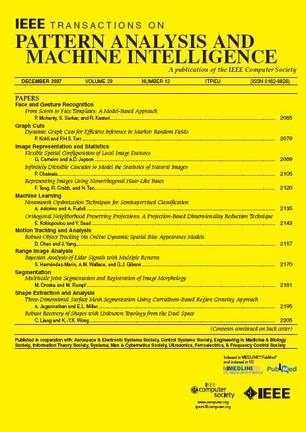图多任务学习的生成因果驱动网络。
IF 18.6
1区 计算机科学
Q1 COMPUTER SCIENCE, ARTIFICIAL INTELLIGENCE
IEEE Transactions on Pattern Analysis and Machine Intelligence
Pub Date : 2025-09-16
DOI:10.1109/tpami.2025.3610096
引用次数: 0
摘要
多任务学习(MTL)是机器学习领域的一种标准学习范式。MTL的中心思想是捕获多个任务之间的共享知识,以减轻数据稀疏性问题,其中每个任务的带注释的样本非常有限。最近的研究表明,图多任务学习(GMTL)比以前的多任务学习方法有了很大的改进。GMTL在任务关系图上表示任务,并进一步利用图神经网络(gnn)来学习复杂的任务关系。虽然GMTL的性能更好,但任务关系图的构建严重依赖于简单的启发式技巧,这导致具有强连接的任务之间存在虚假的任务相关性和缺乏真边。这个问题很大程度上限制了GMTL的有效性。为此,我们提出了生成因果关系驱动网络(GCNet),这是一个新的框架,它逐步学习任务之间的因果结构,以发现哪些任务有利于共同训练,以提高泛化能力和模型鲁棒性。具体来说,在特征空间中,GCNet首先引入了一个特征级生成器来提前生成结构,以降低学习难度。然后,GCNet开发了一个输出级生成器,该生成器被参数化为一种新的基于因果能的模型(EBM),以细化因果驱动的输出空间中的先验学习结构。从我们提出的因果框架中受益,我们从理论上推导出有效训练这种因果实证医学的干预对比估计。实验在多个合成和真实数据集上进行。广泛的实证结果和模型分析表明,GCNet在几个竞争性MTL基线上具有优越的性能。本文章由计算机程序翻译,如有差异,请以英文原文为准。
Generative Causality-driven Network for Graph Multi-task Learning.
Multi-task learning (MTL) is a standard learning paradigm in machine learning. The central idea of MTL is to capture the shared knowledge among multiple tasks for mitigating the problem of data sparsity where the annotated samples for each task are quite limited. Recent studies indicate that graph multi-task learning (GMTL) yields the promising improvement over previous MTL methods. GMTL represents tasks on a task relation graph, and further leverages graph neural networks (GNNs) to learn complex task relationships. Although GMTL achieves the better performance, the construction of task relation graph heavily depends on simple heuristic tricks, which results in the existence of spurious task correlations and the absence of true edges between tasks with strong connections. This problem largely limits the effectiveness of GMTL. To this end, we propose the Generative Causality-driven Network (GCNet), a novel framework that progressively learns the causal structure between tasks to discover which tasks are beneficial to be jointly trained for improving generalization ability and model robustness. To be specific, in the feature space, GCNet first introduces a feature-level generator to generate the structure prior for reducing learning difficulty. Afterwards, GCNet develops a output-level generator which is parameterized as a new causal energy-based model (EBM) to refine the learned structure prior in the output space driven by causality. Benefiting from our proposed causal framework, we theoretically derive an intervention contrastive estimation for training this causal EBM efficiently. Experiments are conducted on multiple synthetic and real-world datasets. Extensive empirical results and model analyses demonstrate the superior performance of GCNet over several competitive MTL baselines.
求助全文
通过发布文献求助,成功后即可免费获取论文全文。
去求助
来源期刊
CiteScore
28.40
自引率
3.00%
发文量
885
审稿时长
8.5 months
期刊介绍:
The IEEE Transactions on Pattern Analysis and Machine Intelligence publishes articles on all traditional areas of computer vision and image understanding, all traditional areas of pattern analysis and recognition, and selected areas of machine intelligence, with a particular emphasis on machine learning for pattern analysis. Areas such as techniques for visual search, document and handwriting analysis, medical image analysis, video and image sequence analysis, content-based retrieval of image and video, face and gesture recognition and relevant specialized hardware and/or software architectures are also covered.

 求助内容:
求助内容: 应助结果提醒方式:
应助结果提醒方式:


